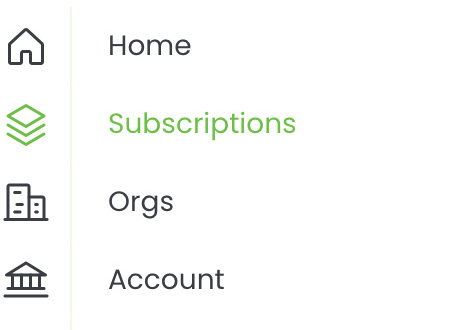Was this content helpful?
How could we make this article more helpful?
Import to Wasabi S3
Prerequisites
Before you can configure and submit your import plan, make sure to complete the following steps so that Lyve Import Service can securely access your specified Wasabi bucket to import your data:
Wasabi subscription—Set up a Wasabi account.
Wasabi bucket—Set up a dedicated bucket for your import. To learn more, see Working with Buckets and Objects.
IP address access—If configured by your organization, list Seagate’s IP address(es) as an allowed source. See IP Address Access.
Seagate authorizations—See below.
Seagate authorizations
Seagate requires permissions to read, write, and list to your bucket to perform the import. Hash-based message authentication code (HMAC) keys using an Access Key ID and Secret Access Key are required to authenticate requests to your cloud resources. To generate the HMAC keys, follow the steps below after creating your bucket:
- Using Wasabi’s console, create a policy.
- Copy the provided JSON script below to paste into your policy document:
- Replace {yourbucketname} with your actual S3 bucket name. Click Create Policy.
- Create a user with programmatic access and attach the policy you created to this user. To learn more, see Creating a User Account and Access Key.
- Record the Access Key ID and Secret Access Key that are generated in a safe place.
{
“Version”: “2012-10-17”,
“Statement”: [
{
“Effect”: “Allow”,
“Action”: “s3:*”,
“Resource”: [
“arn:aws:s3:::{yourbucketname}”,
“arn:aws:s3:::{yourbucketname}/*”
]
“Condition”:{}
}
]
}
Recommendations
Seagate strongly recommends the following best practices:
- Create a bucket dedicated to your import plan.
- Block all public access for your bucket.
- Disable or delete the HMAC key after the import plan has ended.
Configure your import plan
Add your cloud destination credentials and bucket information to configure your cloud import plan.
- All devices within a subscription must be imported to the same destination and region.
- You will be required to enter and validate your bucket credentials.
- On your Home page, select Subscriptions from the sidebar.

- Select a Lyve Mobile service subscription from the list that includes a Cloud Import plan.
- Select Import Plans in the sidebar, or select the link at the top of the page:

- Confirm the Cloud Destination and Region. Select Next.
- Add the Access Key ID and Secret Access Key for your cloud destination. Specify an existing bucket for the subscription. Select Validate Credentials.
- To enable the checkbox, select the IP Address Access Guide link.
- Select the checkbox, and then select Submit.
Inviting another user to configure an import plan
If a different member of your Org needs to configure the import plan for a Lyve Mobile subscription, you can invite them to do so in Lyve Management Portal.
- The person must be a member of the Org containing the Lyve Mobile subscription to which you want to add the import plan. See Manage Org members in the Lyve Management Portal User Manual.
- The member must be given the Manage Import Plans permission. See Manage subscription members in the Lyve Management Portal User Manual.
Naming guidelines
Bucket naming guidelines:
- The name must be unique across all existing bucket names in Wasabi.
- A bucket name must:
- Be a valid DNS-compliant name
- Begin with a lowercase letter or number, and
- Consist of 3 to 63 lowercase letters, numbers, periods, and/or dashes.
- The name cannot contain underscores, end with a dash, have consecutive periods, or use dashes adjacent to periods.
- The name cannot be formatted as an IP address (for example, 123.45.678.90).
Characters to avoid:
- % (percent)
< (less than symbol)
> (greater than symbol)
\ (backslash)
# (pound sign)
? (question mark) - Certain file names may have non-ASCII characters that are 4 byte UTF8 characters (such as emojis). Wasabi does not support these characters and will return a 400 error message to an application that tries to write a file with 4 byte UTF characters in the file name. We recommend renaming the affected files, if possible.
Troubleshooting
See the following knowledge base articles: